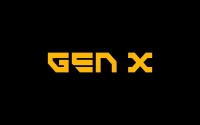The Great DeFi Migration: Why Investors Are Fleeing Hype for a New Era of Verifiable Finance
There are moments in the evolution of any technology when the landscape just… shifts. It’s not a single event, but a change in gravity. We saw it with the early, chaotic web of the 90s giving way to the structured, platform-driven internet we know today. We’re seeing it again, right now, in the wild, brilliant, and often treacherous world of decentralized finance (DeFi). For years, DeFi has been the digital equivalent of a gold rush town—full of opportunity, but also rife with volatility and projects built on little more than promises.
I’ve been watching this space since its inception, and for the first time in a long while, I’m seeing a clear signal cutting through the noise. It’s a migration. Not just of capital, but of philosophy. We’re witnessing a quiet exodus from the casinos of pure speculation toward something far more profound: systems engineered for trust. The catalyst for this thought? A fascinating micro-drama playing out between two projects: a high-flying perpetuals platform called Adrena and a new, architecturally disciplined system named XRP Tundra. When I first started digging into this trend, I honestly just sat back in my chair, speechless. This is the kind of breakthrough that reminds me why I got into this field in the first place.
This isn't just another story about one crypto project winning and another losing. It’s a glimpse into the maturation of an entire industry.
The End of the 'Move Fast and Break Things' Era
For the better part of a decade, the dominant ethos in crypto has been speed. Projects like Adrena embodied this—a decentralized trading platform built on the lightning-fast Solana blockchain, offering high-leverage trading and rapid-fire rewards. It attracted a ton of enthusiasm—a fact reflected in reports like Adrena ADX Rallied 130% Percent In September, A Deep Dive—and for good reason. It was fast, permissionless, and captured the raw, untamed spirit of DeFi. But that model, built on rapid token unlocks and constantly shifting incentives, carries an inherent fragility. It’s a system optimized for momentum, and when that momentum stalls, the structure can get shaky.
Now, look at the alternative that’s pulling investors away. XRP Tundra isn't just a counter-argument; it's a different species altogether. It’s a project that chose to build its foundation not on hype, but on verifiable mathematics and transparent architecture before a single token was publicly traded. This is the shift. We’re moving from a culture of "trust us, it'll work" to one of "verify it for yourself."

Think of it like this: the first generation of DeFi projects were like rickety wooden rollercoasters. They were thrilling, terrifying, and you hoped to God the person who built it knew what they were doing. This new wave is like designing a magnetic levitation train. Every single component—from the fixed presale pricing and capped bonuses to the full, public audits from firms like Cyberscope and Solidproof—is part of a meticulous blueprint designed for stability and predictability. It’s an admission that if you’re going to build a new financial system, maybe, just maybe, the "break things" part isn't a feature. What happens to an industry when its foundational promise is no longer about blind faith in a team, but about transparent faith in the code itself?
Building a System That Can't Cheat
This migration is being driven by more than just a feeling; it’s a response to superior engineering. One of the most brilliant pieces of architecture I’ve seen in a while is XRP Tundra’s use of Meteora’s DAMM V2 liquidity engine. It’s a mechanism designed to solve one of DeFi’s deadliest problems: the launch-day dump, where bots and early insiders crash the price before the community even has a chance.
This system uses dynamic fees—in simpler terms, it automatically applies the brakes when trading gets too frantic right at launch, discouraging bots and panic-sellers until the market finds its natural footing. This isn't just about launching a token, it's about launching a self-stabilizing micro-economy with built-in guardrails and transparent mechanics, and the fact that they're doing this before a single public trade has even happened represents a paradigm shift in how these systems are born. This is proactive stability, not reactive damage control.
Then there’s the dual-chain model, which elegantly combines Solana's high-performance layer for trading with the XRP Ledger's robust governance features for staking. It’s a recognition that no single blockchain is the perfect tool for every job. This is the kind of mature, nuanced thinking that has been sorely lacking. They’re even solving a long-standing problem for one of crypto’s largest communities by introducing Cryo Vaults, a way for XRP holders to finally earn on-ledger yield without surrendering custody of their assets.
Of course, with great innovation comes great responsibility. No system is without risk, and the onus is still on every individual to understand the technology they engage with. But creating systems with inherent checks and balances is a monumental leap forward. This shift from unaudited promises to pre-verified systems feels as significant as the invention of the double-entry bookkeeping that powered the Renaissance. It’s a new standard of accountability, written in immutable code for the entire world to inspect.
The Blueprint is Here
Let's be clear: this isn’t really about Adrena or XRP Tundra. They are simply the characters in a much larger story about the evolution of digital finance. What we are witnessing is the emergence of a blueprint for sustainable, trustworthy DeFi. The era of hype-fueled launches with anonymous teams and unaudited code is drawing to a close, not because of regulation, but because of something far more powerful: a better model has arrived. The future of this space won't belong to the projects with the loudest marketing, but to those with the most elegant, transparent, and verifiable engineering. This is the maturation we’ve all been waiting for.









